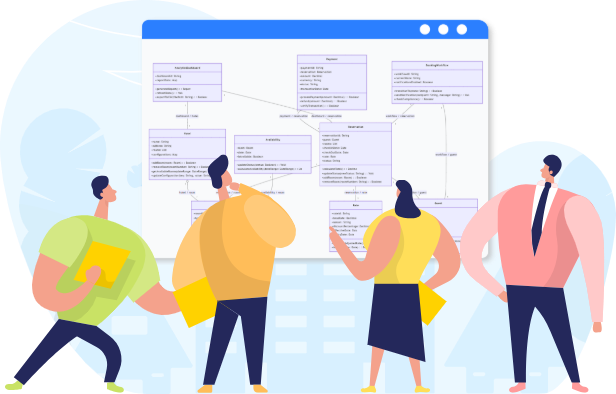Now Reading: Common Uses of Class Diagrams Across Different Industries
-
01
Common Uses of Class Diagrams Across Different Industries
Common Uses of Class Diagrams Across Different Industries
Class diagrams are a versatile visual tool that extends far beyond the boundaries of software engineering. While many associate them with object-oriented programming, their ability to illustrate structure, relationships, and dependencies makes them valuable in a wide range of professional fields. From optimizing workflows to clarifying system requirements, class diagrams help teams communicate ideas with precision and reduce misunderstandings.

Software Engineering
In software development, class diagrams are used to model the architecture of applications. They show how classes interact, what attributes they hold, and the operations they perform. Developers rely on them during the planning stage to ensure that system logic and data flow are well-defined before coding begins.
Business Process Modeling
Beyond coding, businesses use class diagrams to capture and analyze operational processes. For example, in retail management, a class diagram might map out relationships between orders, customers, and products. This provides stakeholders with a clear picture of how various parts of the operation connect, making it easier to identify inefficiencies or opportunities for improvement.
Database Design
Database architects often translate class diagrams directly into database schemas. By defining entities, attributes, and relationships visually, they can align the database structure with real-world requirements. This ensures data integrity and improves communication between database developers and business analysts.
System Architecture
In complex projects, such as manufacturing automation or logistics networks, class diagrams serve as a blueprint for system components. They show how hardware, software, and data systems interact, providing a high-level map for technical teams and decision-makers.
Benefits of Using Class Diagrams
Class diagrams are more than just a visual aid — they are a practical tool for bridging ideas and execution. By providing a clear, structured view of system components and their relationships, they help teams communicate effectively and reduce misunderstandings. Whether you are working in software, business, or database design, these diagrams make it easier to identify redundancies, spot missing elements, and ensure the design aligns with project requirements.
They also serve as a valuable reference throughout the project lifecycle. From early planning to final deployment, a class diagram keeps the team aligned, supports better documentation, and facilitates smoother updates or future expansions. This makes them a smart investment for any project that values clarity, collaboration, and long-term maintainability.


